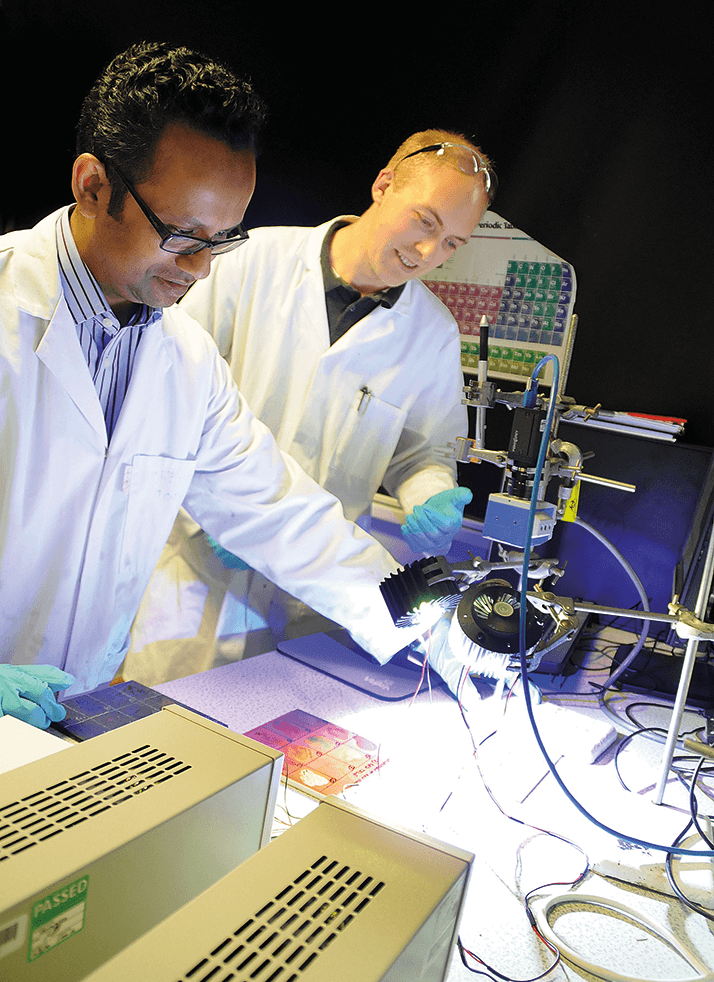A group of UK researchers were overwhelmed (and “ecstatic”) when their work using visible wavelength hyperspectral imaging to identify, and estimate the age of, blood stains was highlighted in Parliament as a “great example of scientific research that could have a significant impact on crime scene investigation”. Meez Islam and his team at Teesside University are hoping to create a portable hyperspectral device that can be used on location at crime scenes and in forensic labs (1).

“Techniques already exist for identifying blood stains, but accurately estimating the age of the stain is one of the ‘holy grails’ of forensic science and no validated method exists to achieve this,” says Islam. “A number of elaborate techniques have been tried previously, but the method we’re investigating is extremely simple; it’s based on the fact that fresh blood is bright red and older stains are darker. We look at this spectroscopic change in more detail to estimate its age.” Specifically, Islam says that the red color of haemoglobin is caused by the absorption of light around 415 nm (the Soret band absorption), which is sharper than that for other red substances. Statistical correlation can be used to compare the spectrum of a suspect bloodstain against a reference spectrum. Hyperspectral imaging was originally developed for satellite imaging, and Islam claims his team is among the first to use the technology in the forensics industry. The project is also Islam’s first foray into forensics, which came about by chance when he was speaking with a biochemist colleague (Liam O’Hare) and a crime scene science colleague (Peter Beveridge) from the university’s forensic science department. “We asked him what kind of technology he would like for a crime scene. He said it would be great to immediately identify various substances, like blood, explosives, bodily fluids, and so on. In my naivety I said, ‘But surely you can do all that already with spectroscopy?’”
Apparently not. So Islam and his colleagues decided to build something. At first he had big ambitions involving a robot that scans the whole room with spectrometers… “But of course that was a little too grandiose to begin with,” he says. “We scaled the whole project back and decided just to focus on blood. Having said that, the technique does have the potential to go beyond blood; it could be applied to other bodily fluids or drugs, and we plan to try this in the future.” Going back to blood stains, the team understands much of the science and knows what is needed to convert the prototype lab instrument into a portable, robust and reliable commercial device. To that end, Islam and his colleagues have established a spin-out company called Chemicam to try and bring the technology to the market. However, there’s still work to be done: “Age estimation has so far only been performed under controlled conditions. To get it to work at real life crime scenes, we’ll need to take into account environmental variables,” says Islam, “and we think we know how to model the spectroscopic change for this. In the end, we want one instrument that both detects a blood stain and also estimates its age.” It was the applied nature of the project that caught the eye of UK politician Ian Swales, who is hopeful it will one day be used by police forces around the country. Islam concludes, “If this problem can be solved, then it could have a massive impact on the criminal justice system.”
References
- Meez Islam et al., “The Detection and Age Estimation of Bloodstains at Crime Scenes Using Visible Wavelength Hyperspectral Imaging”, Evidence Technol. Mag. 12 (1), 12-14 (2014).




